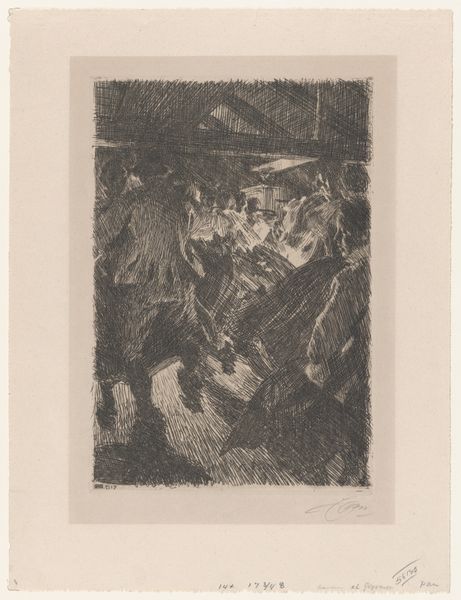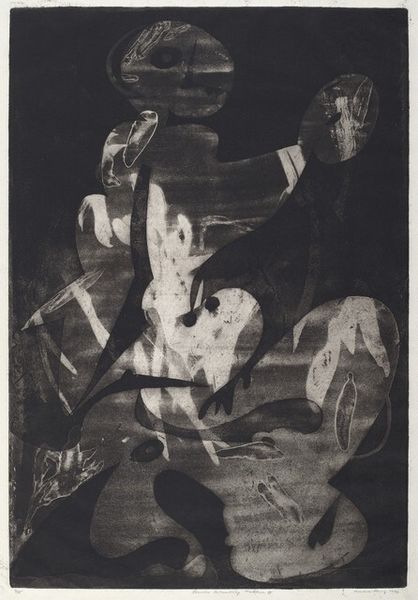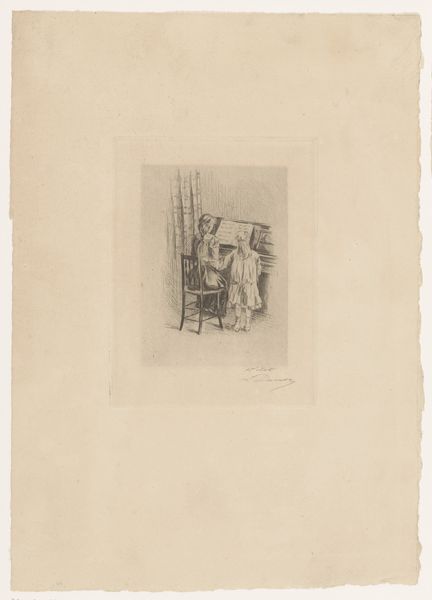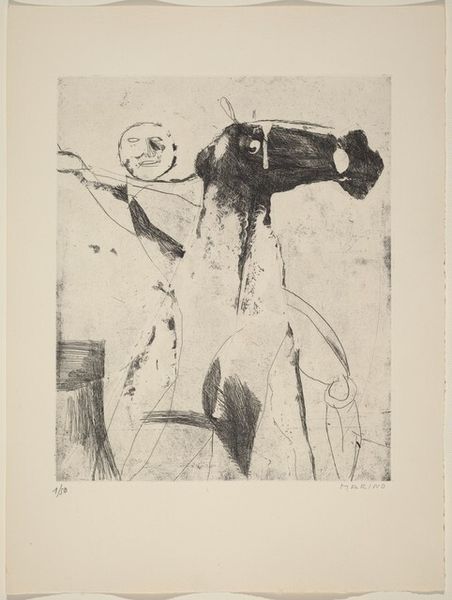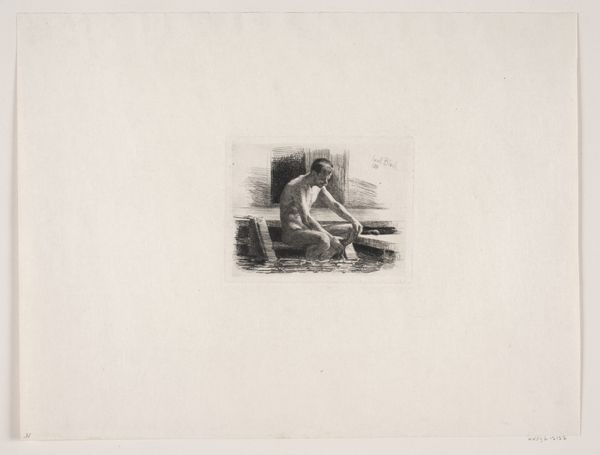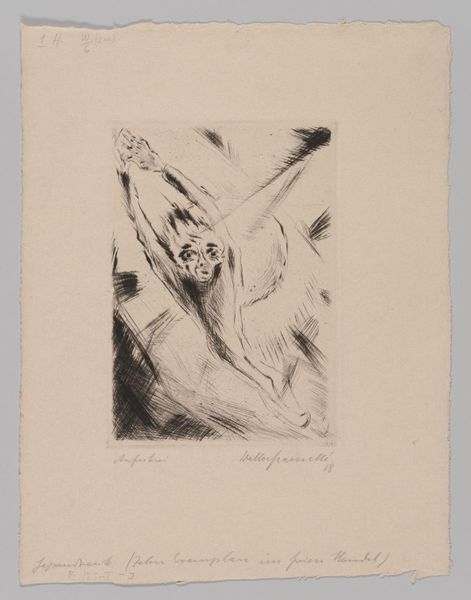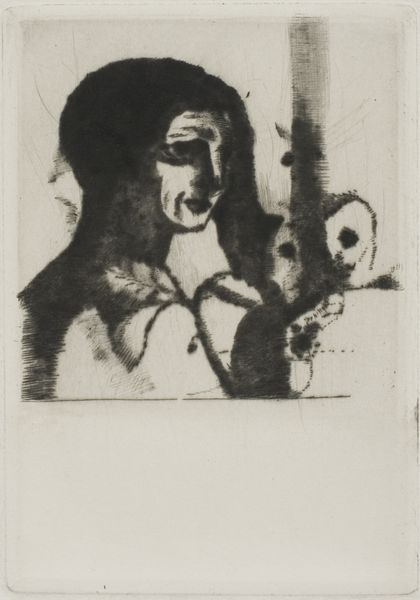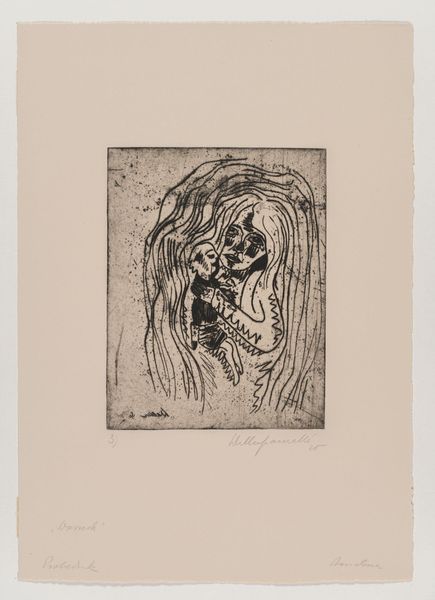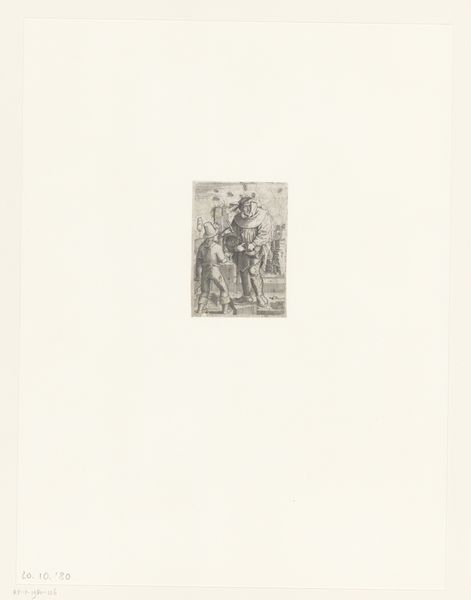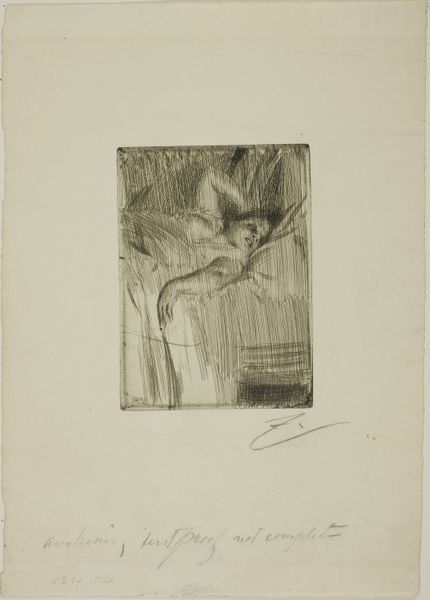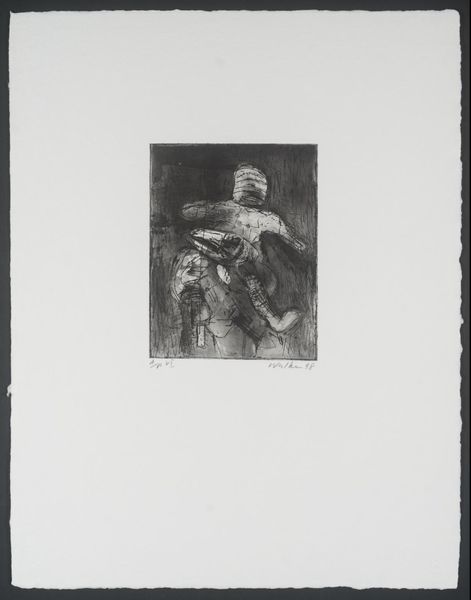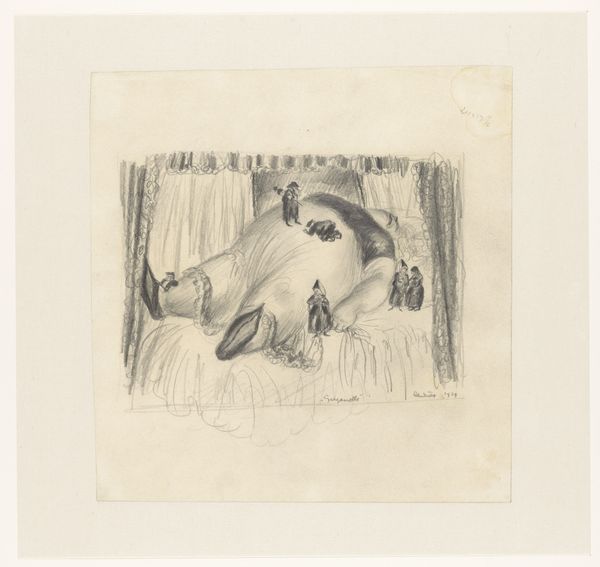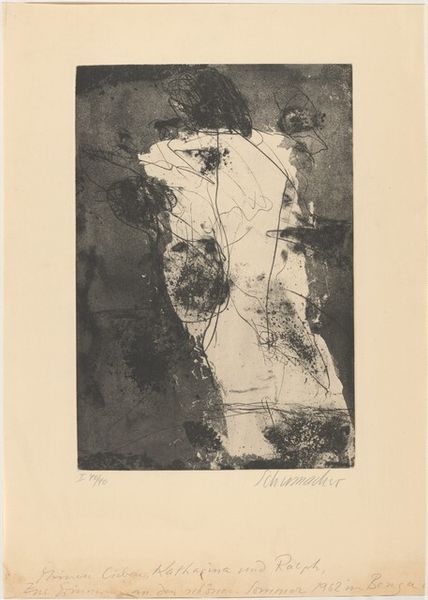
drawing, print, paper, ink, woodcut, engraving
#
drawing
#
narrative-art
# print
#
landscape
#
paper
#
ink
#
romanticism
#
woodcut
#
engraving
Dimensions: height 59 mm, width 74 mm
Copyright: Rijks Museum: Open Domain
Editor: So, this is "Ex libris van T. White" by Thomas Bewick, dating from around 1768 to 1828. It seems to be an ink drawing or print, maybe a woodcut or engraving? There’s a landscape and it’s incredibly detailed, but the image itself has an aura of mystery. How do you interpret this work, what elements stand out for you? Curator: The technique, the very process of making this print, that's where the true meaning lies. Look at the intricate lines, meticulously carved into the block. Each cut represents labor, time, and the artist's mastery of his tools and materials. The social context is vital: Bewick was revolutionary in bringing fine art techniques to a wider audience through printmaking, making art more accessible through this means of production. How do you see the theme of accessibility manifest in his choices? Editor: I see what you mean about accessibility. It's fascinating how the print medium allows for wider distribution. The way it’s so detailed, doesn't that counteract the democratization aspect a bit? Was it cheap to make, or was the process still exclusive in some way? Curator: That’s a astute point! There’s a tension inherent in the materiality. While printmaking *allows* for wider dissemination, the quality and scale of the labor involved would still shape its availability. Consider, too, the paper, ink, and the press itself. The consumption of these materials highlights how even seemingly "democratic" art is embedded within networks of resource extraction and capitalist production. This reveals class tensions inherent to artistic production at the time. Editor: It's almost like the means of production become part of the art itself, telling a story about access and labor. I hadn't considered that depth before. Thank you! Curator: Exactly! Seeing art through a materialist lens helps us unravel complex power dynamics often hidden within seemingly simple images. It shifts our focus from authorial genius to the collaborative processes, material conditions and systems that enable art making in the first place.
Comments
No comments
Be the first to comment and join the conversation on the ultimate creative platform.
